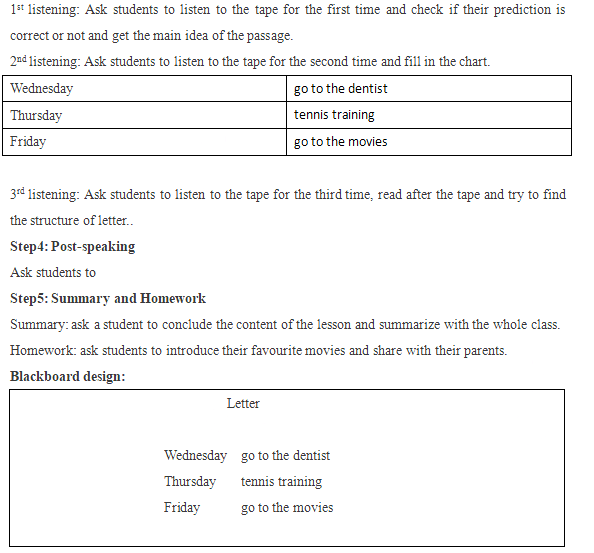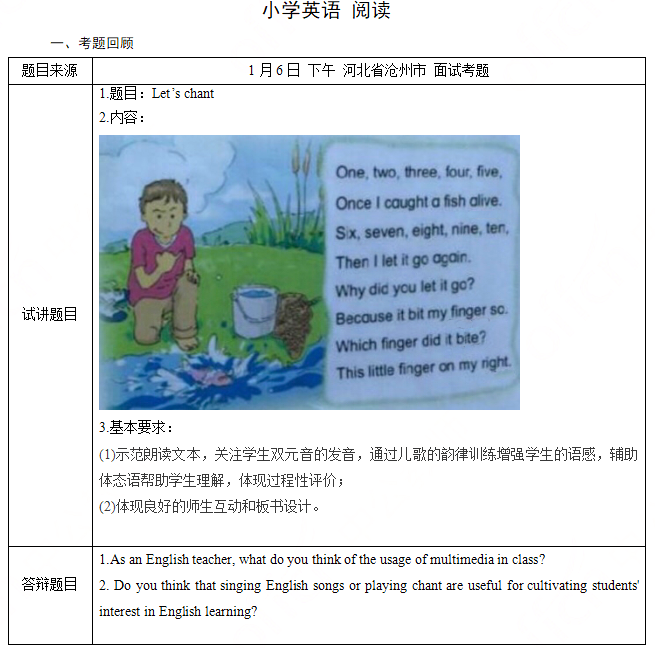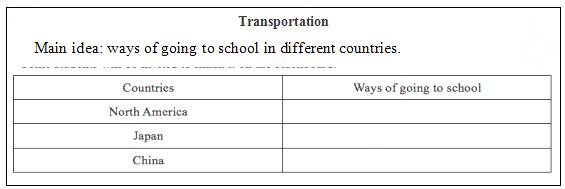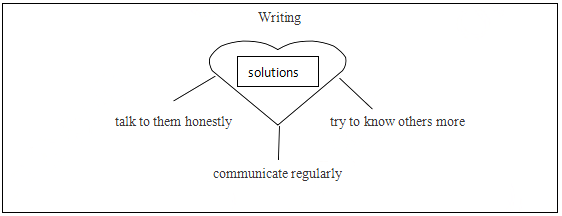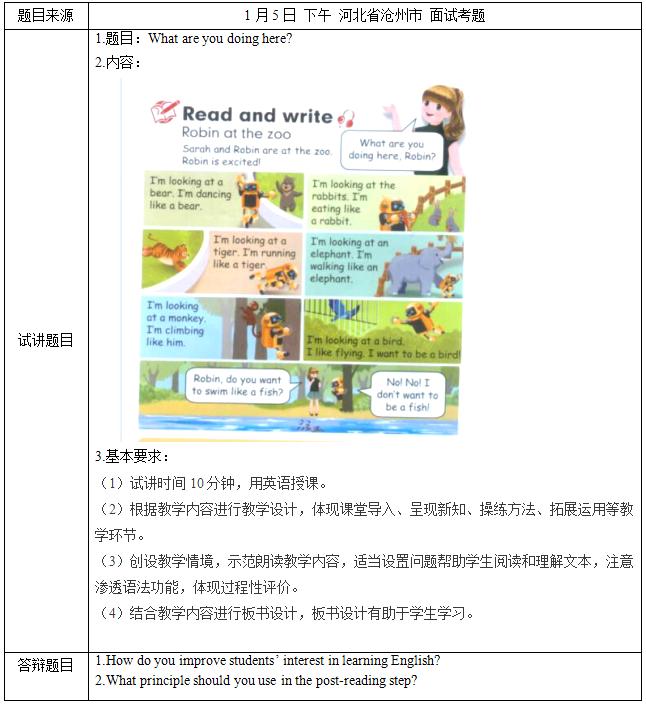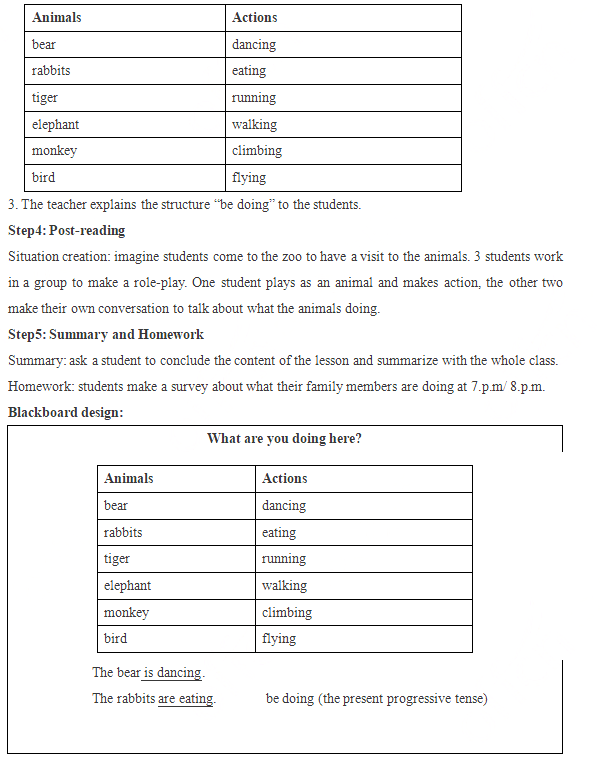高中英语?阅读
一、考题回顾
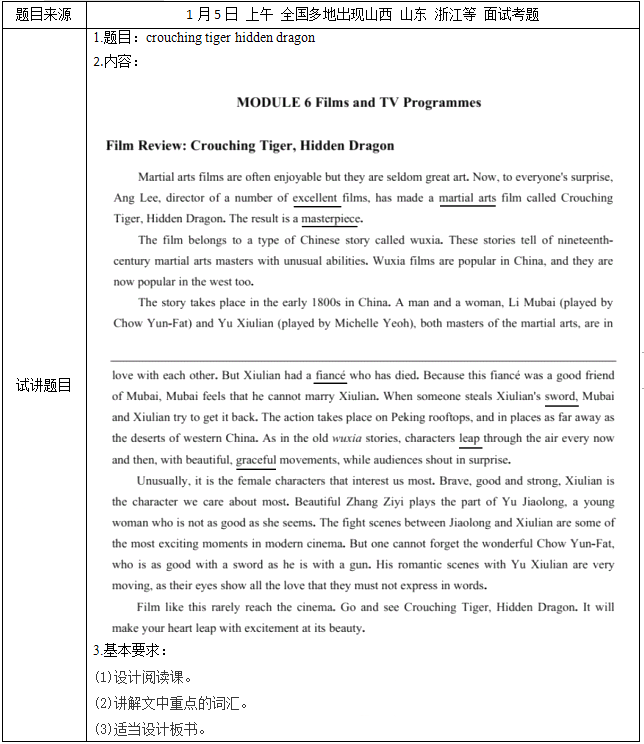
二、考题解析
【教案】
Teaching aims:
Knowledge aim:
(1)Students are able to distinguish the words and Expressions and comprehend their meanings in sentences and paragraphs:leap,enjoyable, graceful,excellent, Martial arts etc.
(2)Studentsunderstand this review and make a film review.
Ability aim:
(1)Students can guess the meaning of new words and phrases while reading, understand what this review is talking about.
(2)After this lesson, students can learn how to write a review about films by using the words and expressions learnt.
Emotional aim:
Students are able to love learning English after this lesson
Key and difficult point:
Key Point: Learn to make a film review based on: director, plot, setting, characters, and actors and develop the reading skill of fast reading and scanning.
Difficult Point: Learn the reading skill of scanning for the specific information of the text and to be able to make a review in writing by the words they learnt.
Teaching procedure:
Step 1: Warming-up
1. Greetings.
2. Show the English trailer of Crouching Tiger, Hidden Dragon and ask students several questions:
Do you like watching movies?
What’s your favorite movie?
Do you want to know more about this film after watching this video?
Step 2: Pre-reading
1. Introduce the topic: Film Review Crouching Tiger, Hidden Dragon
2. Present vocabularies in PPT about Crouching Tiger, Hidden Dragon and then the teacher will ask several questions. The teacher will give the new words and explain new words with sentences.
How does this person looks like?
Is she or he happy or anything else?
Could you please give me some word to describe it?
What does this word means?
3.After learning new words, Give students a table and help them study movie types. At the same time, give students the words about types of film (Romantic film; Martial arts film; Adventure film; Thriller; Comedy); and then show representatives one by one: Titanic; The ShaoLin Temple; Kung Fu Panda; and Bean; last show the definitions

Step 3: While-reading
1.Fast reading: ask students to read the text fast and choose a best summary of this review.
Check the answers.
It is a martial arts film that tells the story of a stolen sword, and the fight to get it back.
2.Careful reading: ask students to scan and read the text again, then discuss the questions:
Discuss the following questions.
When did the story took place?
Where did the story happened?
Who are the main characters in this film?
What this story is talking about?
And then ask students to discuss the reasons why LiMubai did not marry Yu Xiulian, and whether they should get married? Invite two students express ideas in class.
Step4: Post-reading
1. Retell: Ask students to use the words and expressions learnt to retell part of the story according to following clues;
Li Mubai friend love
Yu Xiulian fiancé sword
Yu Jiaolong young woman
2. Discussion: Ask students to choose one of the favorite characters based on the introduction of the text and explain why in their own words. Then find some students to describe one character in public and give students feedback on their performance.
Step5: Summary and Homework
Summary: ask a student to conclude the content of the lesson and summarize with the whole class.
Homework: write a review on your favorite film more than 100 words.
Blackboard design:

1.What's your favorite sports?
2.Please introduce yourself

